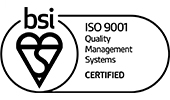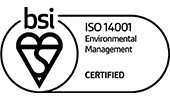
We’ve already explored the impact of multiple generations in the office and how you can use office interior design to help them collaborate and work together productively and effectively. To illustrate this we used the 4 recognised descriptions of the generations that will be sharing the workplace; Traditionalists, Baby Boomers, Gen X and Millennials. But, as the years pass, we’re inching ever closer to the day when a fifth generation will join them.
By the end of this decade, Generation X’s children are due to enter the professional workforce. They come with many names so far… Gen 2020, Linksters, the Facebook Crowd, Gen C, but Gen Z seems to be the preferred title.
Who is Generation Z?
Born after 1997, they have grown up with expectations of fast-paced communication and connections with unlimited access to media technologies, through mobile devices. Giving them the ability to do many things online at once. If Gen Y consists of “digital natives” then Gen C/Z/FB (whatever you want to call them) could be considered “mobile natives”. Highly skilled in online collaboration and quite individualistic, they value predictability and structure with a strong work ethic. They are less inclined to seek face-to-face interaction and may well be easily distracted. Characteristics that suggest they will have different workspace needs than other generations, something that needs to be considered in terms of office interior design. Firstly we have to understand what drives them.
Understanding Generation Z
 It’s worth recognising the similarities that they share with their predecessors, the Millennials, or Gen Y. They both have a passion for creativity, they’ve both used technology to expand their social circles of communication and they both value the ability to customise their belonging and surroundings to match their personality. It is tempting to think that Generation Z will be an accentuated version of Generation Y, but in many ways, they’re very different. Their creativity has involved being able to code a website in their bedroom or becoming a YouTube sensation without leaving the house and their ability to communicate concisely has been honed on the likes of SMS, Skype and Facebook, but at the expense of real-time conversations and face-to-face interactions. Unlike the Millennials, who customised their playlists, desktops and social media pages to match their personality, Gen Z customises in the cloud, able to access any song, game or app that they need at a specific moment in time. They aren’t particularly brand loyal, but the brands they do admire combine design and functionality, like Apple and Beats by Dre. Google have explored the significance of Gen Z, or as they call them Gen C, seeing them as more of a mindset than an age group. They defined them as people who care deeply about creation, curation, connection and community, viewing them as trendsetters who see decision making as a team sport.
It’s worth recognising the similarities that they share with their predecessors, the Millennials, or Gen Y. They both have a passion for creativity, they’ve both used technology to expand their social circles of communication and they both value the ability to customise their belonging and surroundings to match their personality. It is tempting to think that Generation Z will be an accentuated version of Generation Y, but in many ways, they’re very different. Their creativity has involved being able to code a website in their bedroom or becoming a YouTube sensation without leaving the house and their ability to communicate concisely has been honed on the likes of SMS, Skype and Facebook, but at the expense of real-time conversations and face-to-face interactions. Unlike the Millennials, who customised their playlists, desktops and social media pages to match their personality, Gen Z customises in the cloud, able to access any song, game or app that they need at a specific moment in time. They aren’t particularly brand loyal, but the brands they do admire combine design and functionality, like Apple and Beats by Dre. Google have explored the significance of Gen Z, or as they call them Gen C, seeing them as more of a mindset than an age group. They defined them as people who care deeply about creation, curation, connection and community, viewing them as trendsetters who see decision making as a team sport.
What do they want?
 Now that we have an indication of what drives them, it’s time to look at how businesses can attract and retain them in the workplace. Time magazine explored what businesses need to consider in the build up to Gen Z’s impending arrival in the workplace. 60% of 14- to 18-year-olds surveyed in 2013 said that “having an impact on the world” is going to be an important part of their job and they’re also determined to gather real-world experience at the expense of a formal education. In 2010, 71% of millennial teens saw achieving a degree as a life goal. In 2013, only 64% of Gen Z teens felt the same way. Business consultant and management professor, Peter Drucker, born in 1909, spoke about Gen Z in 2005, pointing out that, like his generation, they would measure their value by experience rather than education and knowledge. As a result, a lot more of them are figuring out what they want to do a lot sooner, which makes their arrival in the workplace more imminent.
Now that we have an indication of what drives them, it’s time to look at how businesses can attract and retain them in the workplace. Time magazine explored what businesses need to consider in the build up to Gen Z’s impending arrival in the workplace. 60% of 14- to 18-year-olds surveyed in 2013 said that “having an impact on the world” is going to be an important part of their job and they’re also determined to gather real-world experience at the expense of a formal education. In 2010, 71% of millennial teens saw achieving a degree as a life goal. In 2013, only 64% of Gen Z teens felt the same way. Business consultant and management professor, Peter Drucker, born in 1909, spoke about Gen Z in 2005, pointing out that, like his generation, they would measure their value by experience rather than education and knowledge. As a result, a lot more of them are figuring out what they want to do a lot sooner, which makes their arrival in the workplace more imminent.
What can you do?
With this knowledge in place, businesses can start to look at their office interior design and start to slowly adapt it to suit this creative, mobile, tech-savvy, structure-loving generation. A good mixture of collaborative areas and social break-out zones will suit their strong need to communicate, while enclosed rooms for private meetings and concentration recognises their need for structure and removes any distractions, as will the use of modern office furniture solutions that reduce noise in an open plan layout. With the arrival of this new, fifth generation imminent, it’s worth looking at what their expectations are for the workplace of the future. That’s exactly what we explore in our “Future Workers” video, where Gen Z told us precisely how they feel and what they want.
We’re not sure about the bouncy castle floors though!
Written by Helen Bartlett, Design Manager









